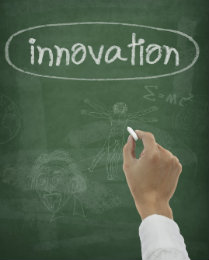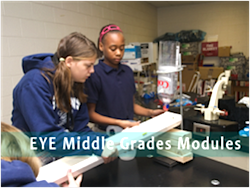Six STEM Myths, Misconceptions & Jaw-dropping Whines
A MiddleWeb Blog
Wouldn’t you know it? An education initiative (STEM) comes along that focuses on preparing students with 21st century career and life skills – and the complaining begins.
Here are some jaw-dropping articles and comments that I have run across recently, propagating what I consider to be misconceptions, myths, and/or just plain whines about STEM education. (Click on bold text for source.)
- STEM defines education too narrowly. We must teach those subjects alongside, not in place of, the behavioral sciences, arts and humanities, and interpersonal and leadership skills.

- Scientists and engineers who will continue the research and development central to the economic growth of our country
- Technologically proficient workers capable of dealing with the demands of a science-based, high technology workforce
- Scientifically literate voters and citizens who make intelligent decisions about public policy and understand the world around them.
Those aren’t narrow goals, although I would like to see the steering committee include mathematics more explicitly. For the record, well-designed pre-K-12 STEM programs do address the writer’s concern about interpersonal and leadership skills, which go hand in hand with innovation.
- STEM makes no sense because it doesn’t fix the failings in our education system: People who believe in STEM must actually abandon STEM programs and focus on reshaping the whole system.
Some of the deficiencies the author wants to fix before implementing STEM:
- Put more money behind the hardest-to-educate kids and less behind the easiest-to-educate.
- Enact higher entrance standards for teacher colleges.
- Make sure teachers really know their subjects – “even” in elementary school.
- Use high quality, internationally benchmarked standards in all core subjects to develop first class, deeply thoughtful course syllabi.
- Develop high quality (not multiple-choice, computer-scored) examinations.
- Allow students from the top of their high school graduating classes (rather than the bottom) to be recruited for the teaching field.
My response: Really? Somebody is preventing top students from going into teaching and education? The logic of this whole article frankly escapes me, although I acknowledge the need and applaud the desire to redesign our education system. Must we really accept that we can successfully implement a STEM focus only after we reshape the whole education system? Does introducing STEM now somehow sabotage efforts to fix education?
Note that quality STEM programs are already spearheading some of the stated improvements needed in the education system: for example, reaching and engaging all kids; using higher content standards that go deeper and require real-world application; using formative assessments; and helping teachers learn and grow in their knowledge and pedagogy. Maybe STEM is actually a step in fixing the system.
- STEM education doesn’t address inequity issues and a teacher talent gap. STEM workers are predominantly male, from higher socio-economic backgrounds, and are commonly either Caucasian or Asian.
My response: Agreed. Women and minorities are not adequately represented in STEM career areas. However, quality STEM curriculum in the preK-12 arena puts an intensive focus on including and attracting all students. Equity is a matter of strong STEM advocacy both in the education and business worlds.

My response: Think again. Take a look at some of the innovative and creative technologies designed for robotics competitions. Look at the work of Jie Qi, a young mechanical engineer at the MIT Media Lab, as she artfully engages with with educators and students to literally “energize” books and writing. Engineering produces some of the world’s most inventive and creative professionals. The arts also play a valuable role in making engineered products attractive, usable, and ergonomic. You can read a more thorough discussion of STEM and the arts here and here.
- STEM Jobs are low-paying. Chairman of the biological sciences at Columbia University states that “For Chinese and Indian students, science remains a way out of poverty. For American students, it’s becoming the path into it.” College students with STEM degrees wind up taking jobs in finance and consulting.
My response: Hmmmm. Another “think again” moment. Here’s what I found as of 2012 when I Googled STEM degrees. Not exactly a list of “losers” or low paying jobs. Also – it’s interesting how many writers mislabel “STEM” as “science.”
- Media misinformation about STEM. Rolling out a litany of STEM misconceptions, this disgruntled N.Y. Times writer describes STEM as an “odious and increasingly pervasive term” and STEM advocates of brewing “greasy-peasy: collapse down education.”Some of her complaints include:
- STEM singles out single subjects, such as science and math. She cites a Berkeley professor who says: “It’s a ‘false distinction’ to ‘silo out’ the different disciplines.” Interestingly, this professor goes on to assert that it would be preferable to “focus on what the fields have in common, like problem-solving, arguing from evidence and reconciling conflicting views.” (As a STEM curriculum writer, that’s my mission in life, professor.)
- STEM is an acronym and some people don’t know what STEM means. They think it’s about flowers or stem cells. The term sounds didactic and jargony.
- Acronyms like STEM encourage rampant me-tooism. For example, some have lobbied for the addition of medicine to the program, to form a “STEM squared,” acronym. Even the arts are hankering for a STEAM position.
- STEM is an “old” idea – dating back to the 1990s when the NSF began drawing up national science standards amid requests to include mention of math, technology, and engineering.
- STEM is an expensive improvement – it requires science equipment and economics be part of the equation. Corporations are being asked to help pay for this initiative.
My response: The first bullet point is just plain wrong. STEM does not single out subjects – it integrates disciplines, and focuses on the skills mentioned as needed. The last four bullet points are simply a collection of whines that provoke “so what’s?” We’ll just let it go at that.
Get real about STEM:
Articles such as these highlight, more than ever, the need for understanding what STEM is and is not, among educators as well as the general public. Consensus around STEM – at least the preK-12 version – focuses on these key characteristics.
Subjects are integrated: It’s STEM – not S.T. E. M. (It’s not just about science. That’s an amazingly frequent slip of the pen among those who complain about STEM and others who want to gain STEM credit for something that doesn’t meet the criteria.)
- Kids address real-world issues and attempt to solve real-world problems.
- STEM involves hands-on and inquiry based learning.
- The engineering design process is the heartbeat of STEM – the route by which students identify problems and approach problem-solving.
- Kids work in teams, and develop skills such as successful collaboration, critical thinking, problem-solving, innovation, and communication, to name a few.
- STEM lessons are designed so that diverse groups of students experience success.
- STEM teachers are facilitators, not lecturers.
- STEM challenges have multiple right answers, or pathways to success; and fear of failure is minimized or removed.
- Authentic, formative assessments are a way of life for STEM.
Why are we still struggling to wrap our heads around STEM? Yes, it still has warts and is constantly under construction. But STEM is, hands-down, the best option we have for helping students learn and apply math, science, engineering, and technology; and it’s great preparation for the workforce and for life.
So now it’s time for someone to take me to task for my list of points about STEM. Have at it. I’m ready for some real discussion about what STEM means and why it represents the kind of student-driven learning that so many are now advocating for.
Photo Credit: pennstatenews via Compfight cc





































Great article Anne! My only concern with STEM initiatives is that they may be too focused on the fun things in the T&E areas and do not follow up with the S (Physics) & M (Algebra) that make the T&E all work. I realize I may have left out some science and math courses but these two are the ones I feel the strongest about. Too many HS graduates have never taken even basic physics. Why? Because they are told the math is too difficult! Drop a ball – Did you see any numbers? – Physics is about how things work, not about math. For math algebra is the key. It’s all about the “equal sign”. The key to algebra is understanding it is about relationships not just about computations.
That’s certainly a valid concern! One hope of STEM is that it will deepen student understanding of science and math content; of why they’re learning science and math; and of how what they’re learning applies. In a really well done STEM course, the intentional application of specific math and science content would be a slam-dunk.
What you relate – a lopsided emphasis – would be a misuse of a great initiative. STEM should stimulate curiosity and learning in maths and sciences, and create interest in taking higher level courses in those subjects. At least, that’s the thinking from the middle school perspective. Hmmmmm . . .we still have work to do!
Hello Anne, I love the article! I am a 2nd grade science and social studies teacher and have always had a love for STEM. I believe it is also a philosophy of teaching and a more of a way of thinking. I noticed through integrating STEM throughout the school year my student’s reading comprehension, math skills, confidence, and overall love for learning really improved. The Engineering Design Process really has them thinking, and allowing the students to make improvements on designs and models seemed to disintegrate their fear of failure and taking chances. I am giving a presentation to my colleagues about the advantages of STEM. I would love to use the “Get Real About STEM” information in my slide show. I will also be including common misconceptions about STEM, such as it is not just for science. I would love your input on common misconceptions that teachers may think STEM represents or that they “have” to do for it to be STEM. Thank you for the great article and for all your support in STEM education.
So glad you find this information useful, Angie. You are always free to use any information from my blog posts in presentations, etc.
Some additional misconceptions about STEM you may wish to address include:
(1) STEM and PBL are the same thing. Nope – STEM uses a PBL approach (inquiry) to build deeper knowledge and skills in the four STEM areas and to create a successful 21st century workforce in STEM fields. So, while all subjects play a role in this, the focus is on STEM preparation. (BTW – this doesn’t take anything at all away from other subjects.)
(2) Simply strengthening a math or science program means we are “doing” STEM. Nope. STEM integrates these subjects, along with appropriate technologies and using an engineering process. If you just strengthen a program in a subject area, you’re just doing what we’ve been doing for over a century.
One way all subject areas can tie in to STEM is to focus in an intentional and planned way on specific thinking and process skills that all kids need, regardless of career preference. Things like teamwork, for example, are important. To help teamwork skills grow and stick, teachers need to use the same approach with the students, so that the process they use for working together makes sense to them. Other skills involve critical thinking, innovation and invention, curiosity, and asking good questions. All subjects do play a role in a STEM approach.
Hope those help. I’d love for you to post some of your successes and challenges in helping your colleagues understand STEM.